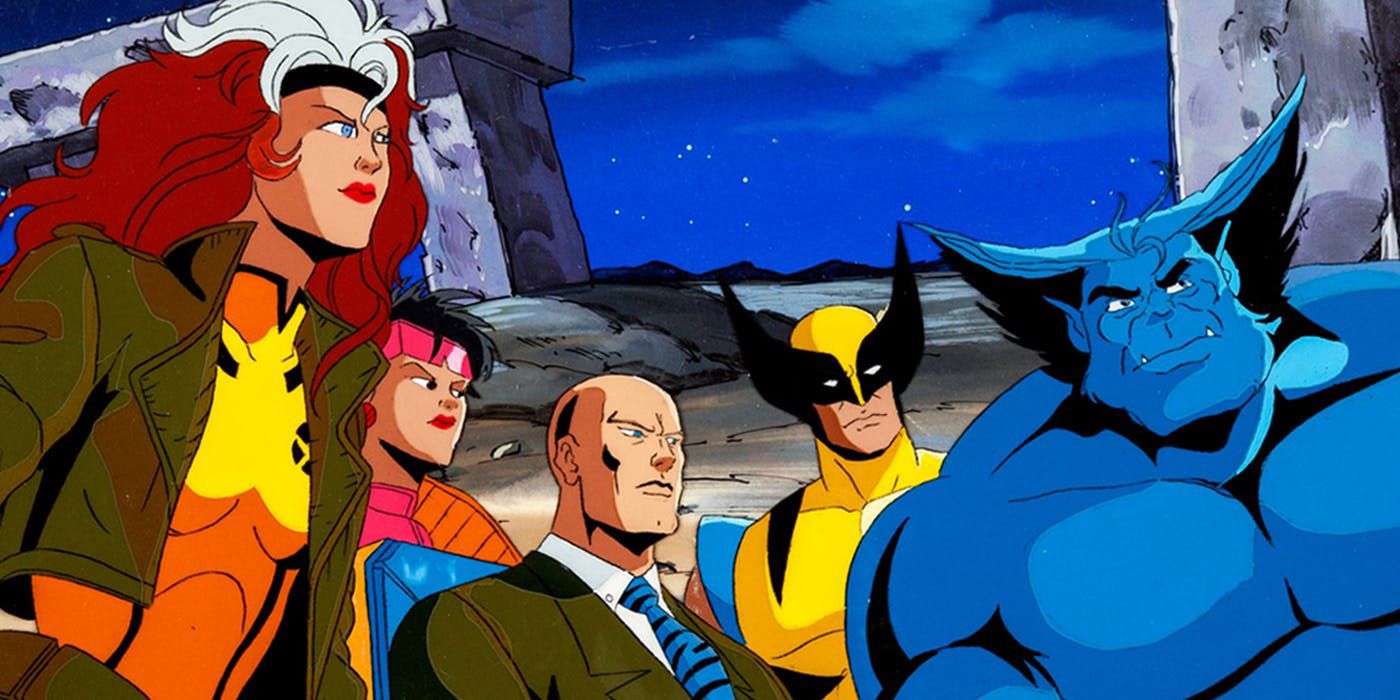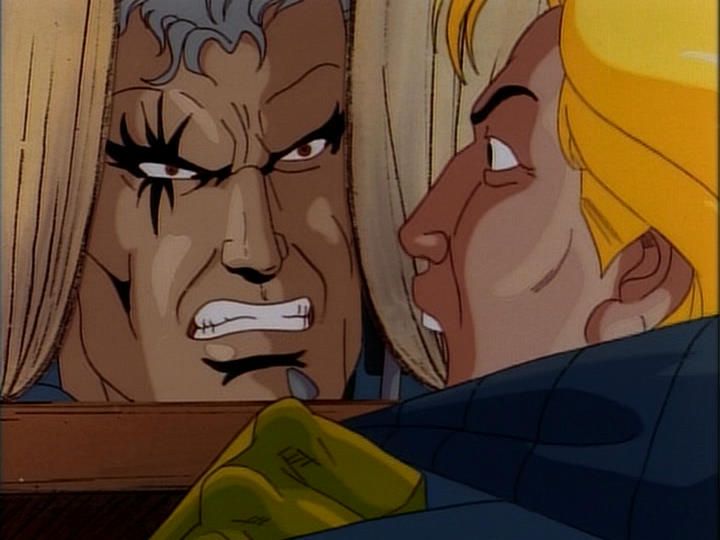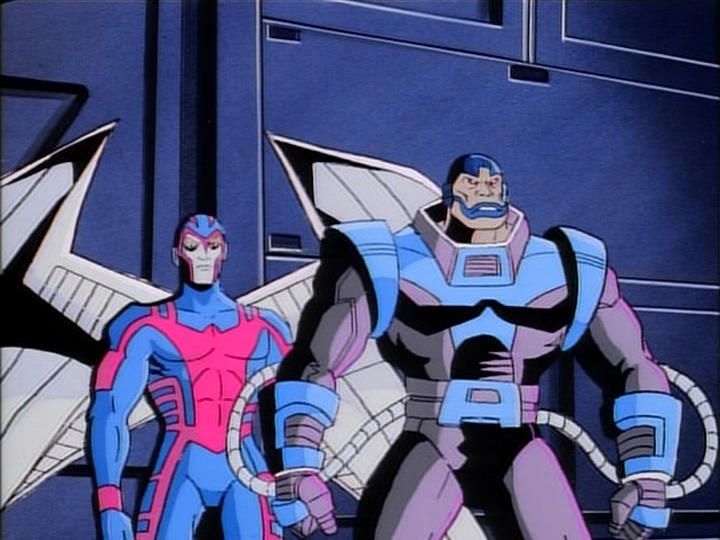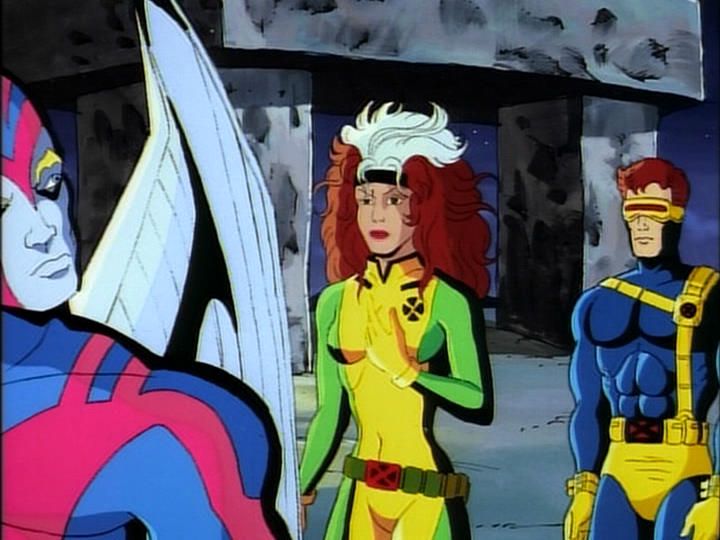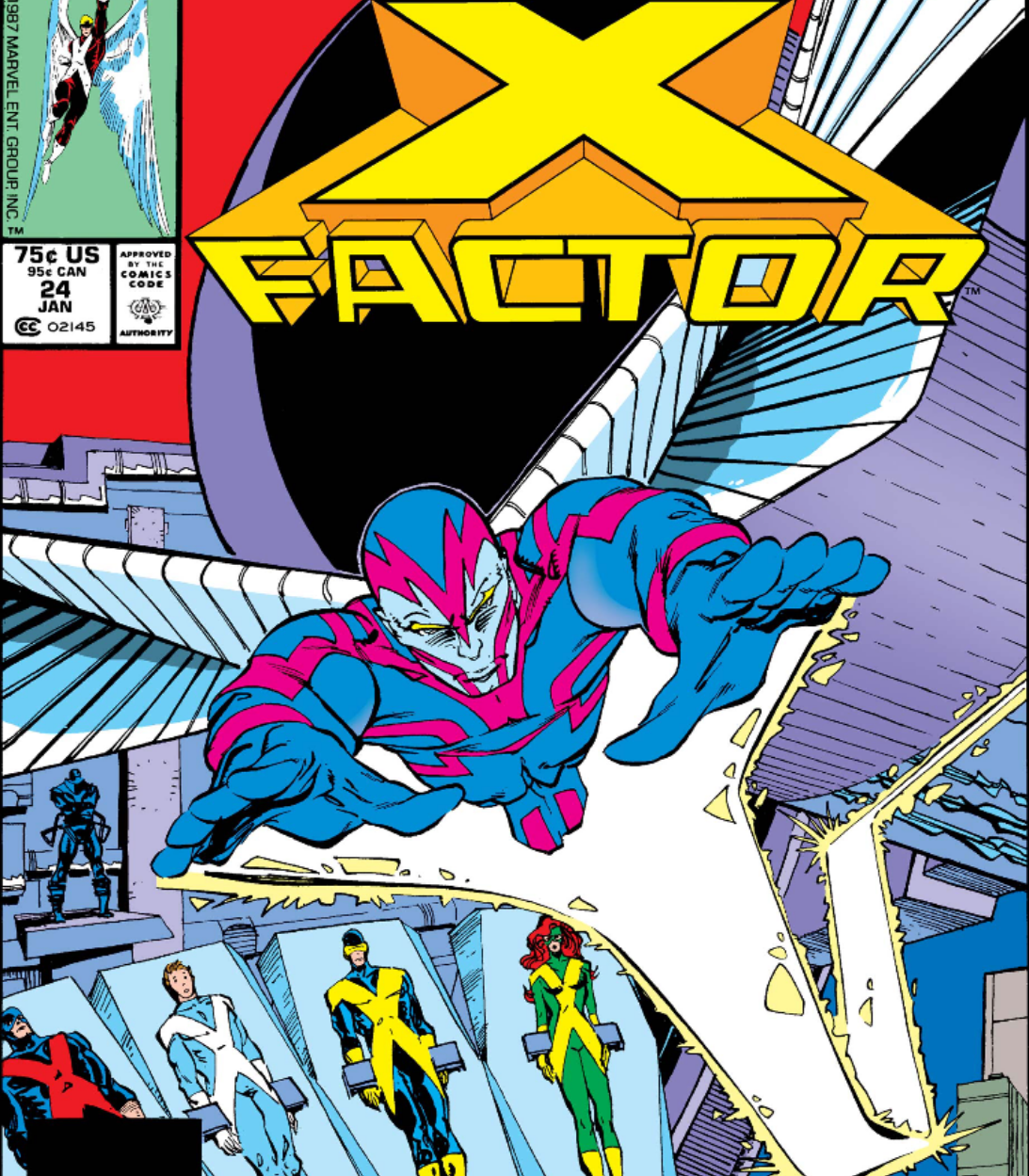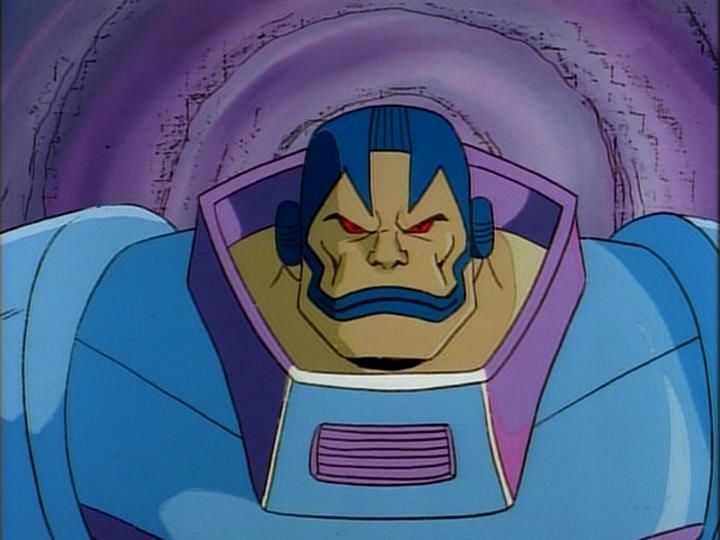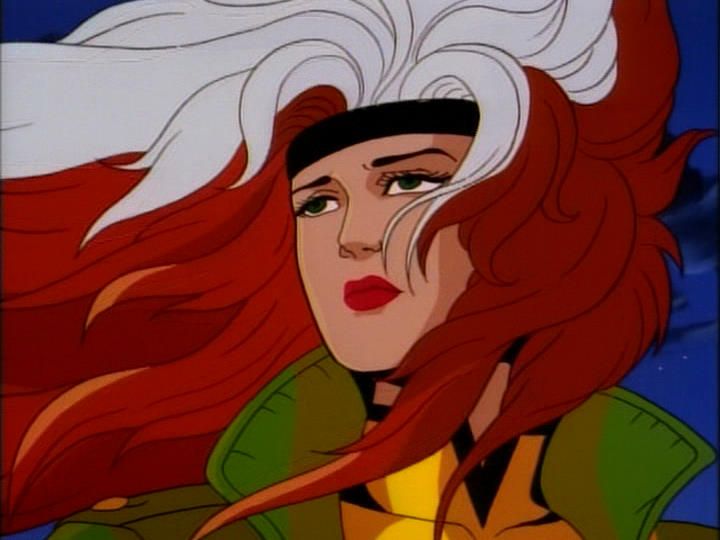Welcome to Adventure(s) Time's 143rd installment, a look at animated heroes of the past. This week, we're looking at X-Men: The Animated Series' take on a seminal story from the X-canon…while also addressing some concepts the feature film series hopelessly bungled. And if you have any suggestions for the future, let me hear them. Just contact me on Twitter.
Airing during X-Men's 1992-1993 debut season, "The Cure" and "Come the Apocalypse" served independently as a two-parter, while also addressing some dangling plot threads from an earlier episode, "Slave Island," and setting the stage for the series' adaptation of "Days of Future Past." (The writers are two brothers, Mark Edward Edens and Michael Edens, who split up the two episodes.) The first season's ability to weave stories like this together while also introducing the general audience to the comics' occasionally knotted continuity is admirable, to say the least.
Airing on Feb. 20, 1993, "The Cure" introduces Dr. Gottfried Adler, a scientist who claims to have devised a cure for the mutant gene. Rogue travels to Muir Island, where Adler has rented research space, seeking his treatment. This follows a poignant sequence that has Wolverine (within Rogue's earshot) declaring any mutant considering the treatment a traitor, followed by Jean Grey musing on the tragedy of Rogue's power, which prevents her from enjoying the intimacy Jean shares with Cyclops.
Rogue's inability to touch another person's skin without stealing their consciousness makes her an obvious focus for any story about mutant cures, which is why 2006's X-Men: The Last Stand attempted to create a heartbreaking character arc with Rogue debating a similar treatment. Critics rightly pointed out the sequence felt under-cooked, with no real bearing on the story. Actor Anna Paquin's schedule, which limited her availability, played some role in that. However, the studio's insistence the film feature a massive mutant-versus-mutant war, and introduce Dark Phoenix, to cap off the trilogy was likely a bigger culprit.
Before bringing in the X-Men, "The Cure" opens with a scene in which Cable (still portrayed as a pro-mutant militant) searches for Dr. Adler, hoping to bully the doctor's associate, Angel, into revealing Adler's location. Cable doesn't get the info he needs, but Angel is outed as a mutant in front of his girlfriend, and is shot twice in a span of under four minutes.
Angel also wants a cure for his mutation, which again mirrors a plot point in X-Men: The Last Stand. This was another detail the film botched, but it would seem these episodes provided an easy template for the movie to follow. Imagine an X-Men film that introduces Cable as a potential terrorist determined to kill the cure's creator and mutants like Rogue and Angel caught in the middle… then think of the mess the studio produced.
The episode's twist is that Dr. Adler is Mystique in disguise, and the cure is merely a means for her master, Apocalypse, to manipulate mutant powers and create his Horsemen soldiers. (Casting Mystique as subservient to another character is perhaps the show's only real deviation from the comics' characterizations, although she was more on-model in her later appearances.) After the cast has been summoned to Great Britain, the follow-up episode "Come the Apocalypse" opens with Angel's transformation into Archangel.
He joins other mutants duped by the "cure": Famine, Pestilence, War and Death, serving out Apocalypse's remit to cause global chaos. Why does Apocalypse want this? The episode isn't that clear, but to be fair, the comics at the time had also been rather vague about Apocalypse's motives, outside of his desire to apply "survival of the fittest" to literally everyone. In fact, Apocalypse co-creator Louise Simonson didn't provide her intended Apocalypse origin until 2010's X-Factor Forever series.
The episode's climax has the X-Men facing Apocalypse and his Horsemen at Stonehenge, and gives Rogue a decent payoff for her story. She's the one who uses her powers to revive Archangel's true personality, which enables the team to ultimately defeat Apocalypse. It's a more satisfying ending than her deciding to take a cure we discover in the next scene doesn't work anyway. (Way to stick to your premise, Last Stand.)
Comics fans were well aware of the stories that inspired these episodes. Following the "Mutant Massacre" event (the first-ever crossover between Marvel's mutant comics, in addition to titles like Thor and Power Pack), Angel lost his wings and grew suicidal. He was "saved" by Apocalypse and remade into the villain's final Horseman, Death. This was the culmination of X-Factor #23-25, chapters in the next big X-event, "Fall of the Mutants," from writer Louise Simonson and artist Walt Simonson.
Many of the same beats are followed, with Apocalypse sending his Horsemen to cause chaos in a major city, and a guilt-ridden Angel ultimately switching sides after being confronted with what he's become. Although the era's standard superhero story was still operating under the mandate of "illusion of change," the alterations to Angel had a significant impact on continuity. He maintained his blue skin and metallic wings for years, even as X-editor Bob Harras pushed for many continuity elements to revert to the status quo.
Warren Worthington's return to his Angel persona occurred slowly, over the course of many years. The first step was when X-Factor penciler Whilce Portacio casually revealed that the dark blue elements of Archangel's skin were in fact his costume: The light blue was his actual skin, and he even had a mane of thick blond hair under his skullcap (which contradicted the times he'd been referred to as bald).
Years later, writer Scott Lobdell and penciler Joe Madureira would have Archangel revert to an earlier pre-Apocalypse costume. Then, in Uncanny X-Men ##338, Archangel's metal wings mysteriously molted, seemingly under the command of Apocalypse, revealing feathers beneath.
From there, we had a Warren Worthington who looked the same as he did when Neal Adams rendered the character in the 1960s…aside from that blue skin. This was subsequently dropped by writer Chuck Austen and penciler Ron Garney in 2002's Uncanny X-Men #412, after some murky plot developments that involved the villainous Black Tom's powers going out of control.
While he kept the name Archangel (a new "Angel" had been introduced by Grant Morrison in New X-Men), the character was now back to his pre-"Mutant Massacre" status quo. It's hard to deny how cool that Walt Simonson design is, though, so a return to that look happened only a few years later, in the pages of 2008's X-Force relaunch, courtesy of Craig Kyle, Christopher Yost, and Clayton Crain.
And, just to throw more shade at the movies, Archangel's story did receive a silver screen adaptation in X-Men: Apocalypse. This brought us a poofy-haired Archangel with no discernible character arc, little screentime, and no blue skin. He didn't exactly capture the public's attention.
'THE CURE' & 'COME THE APOCALYPSE' CONTINUITY NOTES
Fans have noticed some dodgy continuity in these episodes over the years. It's difficult to reconcile Mystique posing as Dr. Adler for presumably weeks when she was recently held captive in Genosha during "Slave Island." We also have Mystique's Brotherhood associates unable to recognize her in her true form, not to mention her foster-daughter Rogue. (Although a later episode will establish Mystique lived under a different form when mentoring Rogue in this canon.)
Finally, the story treats this as Angel's first encounter with the X-Men, yet flashbacks in future episodes stick with the comics' canon, establishing him as a founding X-Man.
DESIGN CHANGES
Archangel's feather-blades are inexplicably rendered as arrowheads, similar to historical Native American arrowheads. This is corrected in his later animated appearances, while in the X-Men: The Manga adaptation, the blades only appear once, in one panel in Issue 20, looking comics-accurate. (Marvel did production work on the pages before reprinting them in America, so perhaps this was a later fix.)
'MY AGENTS OF DESTRUCTION...'
Arguably, Archangel should've received more of the spotlight, but he wasn't a main cast member, so traditional TV writing has him here to serve the star characters. Still, he made a memorable appearance, and diehard X-fans were given a pretty faithful adaptation of his origin. (Something you couldn't have expected at all in 1993.)
Director Bryan Singer had no involvement with Last Stand, but did later direct 2016's Apocalypse. Singer has indicated his research for the X-Men films consisted of watching this show, not reading the comics. It's understandable why he'd view Apocalypse as a feature film-worthy villain after these episodes—those melodramatic speeches, the shapeshifting powers, the millennia-old backstory… Apocalypse has to be played big to work. He's the perfect villain to introduce into an aging film series, a signal to the audience you're truly raising the stakes with this one.
It's amazing that Singer didn't learn the main lesson offered by the show, however. All of the big action set pieces mean nothing if the audience isn't invested in the characters. The story of Rogue searching for peace within herself, played against a moral dilemma for mutantkind and Apocalypse's desire for global unrest, helps to shape the story into something memorable. The stakes are both internal and external, and while the story lends itself to striking visuals, what's truly memorable is the exploration of Rogue as a character.

